'Ceefax gave you news when you wanted it'
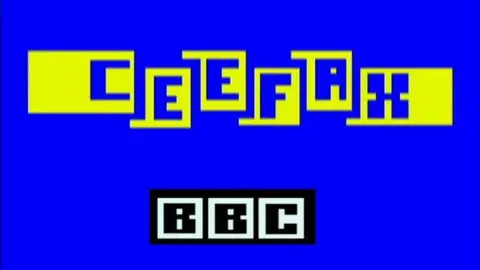 BBC
BBCThe world's first teletext service is to be celebrated at a special exhibition marking its 50th anniversary.
Today people take interactive television services and news on demand for granted, but their origins goes back to 1974 when the BBC launched Ceefax.
The service eventually attracted 22 million users with its mix of sport, news, recipes, features, quizzes - and TV and radio listings, until the internet killed it off.
"Ceefax was unique at the time, when a story broke you didn't have to wait until the next bulletin, you'd go to Ceefax and get the story when you wanted it, not when the schedulers wanted it," said Ian Morton-Smith, one of its first journalists.
Its 50th anniversary is being marked by a two-day event at the Centre for Computing History in Cambridge, attended by former Ceefax, ORACLE, 4-Tel and Teletext Ltd employees, as well as enthusiasts and teletext artists.
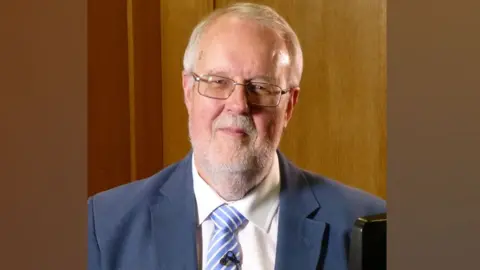 Ian Morton-Smith
Ian Morton-Smith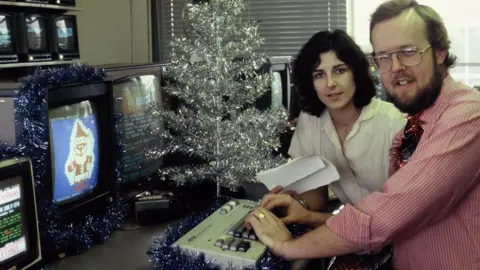
"We started working on the sixth floor of TV Centre and had all these news services like Reuters and PA and our job was to pick stories and write them up for Ceefax," said Mr Morton-Smith, known as Mort Smith to colleagues, who lives in Sudbury, Suffolk.
"When we'd finished creating a page, we pushed a button and out came a yellow punched tape, so we'd grab it and run downstairs to the central apparatus room, feed the tape into a machine pushed a button and it was live.
"If when we went back upstairs we saw a spelling mistake on the screen, we had to do it all over again."
He said it taught him how to write in a disciplined way, with only 80 words to tell a story. He went on to develop teletext services in the USA and for Channel Four after leaving the BBC in 1981.
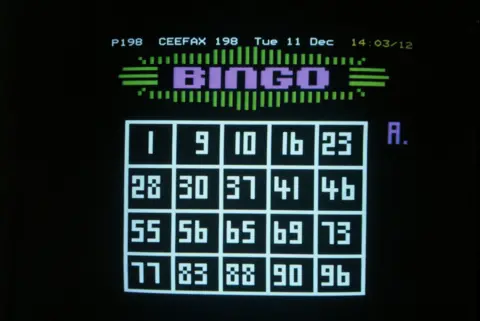
Ceefax was developed by BBC broadcast engineers out of a desire to provide subtitles for viewers with impaired hearing.
They found that a normal television picture of 625 lines had "spare" lines at the top of the picture which could be used to transmit words or numbers.
There were initially only four Ceefax-enabled TVs - and one belonged to the service's first manager, Colin McIntyre.
Mr Morton-Smith said: "When we first started, Colin was working all hours, so he was always running late to get home, so he got in the habit of using a back page on Ceefax to say to Field his wife, 'I'm just leaving, home in 40 minutes'."
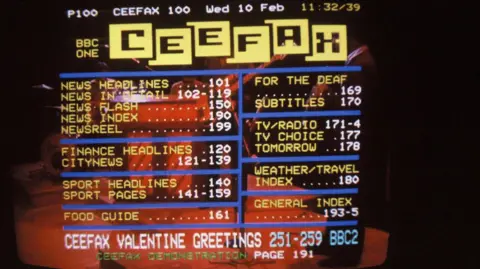
The BBC pulled the plug on the service in 2012 but it has continued to attract enthusiasts, including Jason Robertson, a teletext archaeologist from Congleton, Cheshire.
At about that time, fellow enthusiast Alistair Buxton explained that it was possible to "rescue" teletext pages from domestic video tapes used to record TV programmes.
Mr Robertson, 53, described it as "VHS skip-diving" and added: "We thought that was the end of it, but when we realised we could recover teletext, the medium was democratised, with people doing their own thing."
For him, the appeal of teletext is partly nostalgic and partly what can be done with it today - it also attracts artists who like the "big bold colourful graphics".
"I'm from the 1970s and we had newspapers and print," he said.
"When teletext came along it was just incredible - instead of just staring at the TV passively, we could pick up the remote control and dial up whatever we wanted to see."
- Block Party - Teletext 50 is at the Centre for Computing History in Cambridge on Saturday and Sunday

Follow Cambridgeshire news on BBC Sounds, Facebook, Instagram and X.
